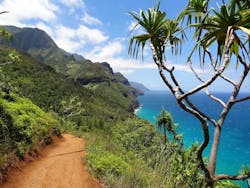Hawaii Infrastructure Receives D+
The inaugural Report Card for Hawaii's Infrastructure was released by the American Society of Civil Engineers’ (ASCE) Hawai‘i Section on Mar. 8, giving 11 categories of infrastructure an overall grade of a “D+.”
According to the report, most of the Aloha State’s infrastructure systems are in poor to fair condition. The state’s roadways are among the most congested in the nation, and there is a $23 billion transportation infrastructure funding gap over the next 20 years.
According to The American Society of Civil Engineers (ASCE), the report includes an evaluation of the following categories: aviation (C-), bridges (C+), coastal areas (C-), dams (D), drinking water (D+), energy (C-), roads (D+), schools (D+), solid waste (C), stormwater (D-) and wastewater (D+).
Stormwater received the lowest grade in the Report Card, sitting at a “D-.” According to ASCE, the state has experienced an increase in extreme flooding caused by high tides, storm surges, hurricanes, tsunamis and sea level rise. The flooding causes pollutants, trash and debris to enter Hawaii's water resources.
Based on the Environmental Protection Agency’s (EPA) 2018 assessment, 88 of the 108 marine water bodies did not meet water quality standards. However, projections show that by 2100, sea levels will rise by approximately 3.2 ft, meaning over 20,000 people would be displaced, roughly 5,700 structures would be impacted and approximately 40 miles of coastal roads would be at risk of sea inundation.
“Governor Ige and I would like to thank the American Society of Civil Engineers for this valuable, candid assessment of Hawaii’s infrastructure,” said Josh Green, Hawaii Lt. Governor. “Investing in our state’s infrastructure not only ensures that Hawaii residents get to work and school safely and efficiently, but it plays an important role in the health and overall quality of life for Hawaii residents and visitors. While we are making measurable progress under the Ige administration, this Report Card shows us that we still have more to do to modernize the Aloha State’s infrastructure systems. We remain committed to working with state and local leaders to get this done for the good people of Hawaii.”
